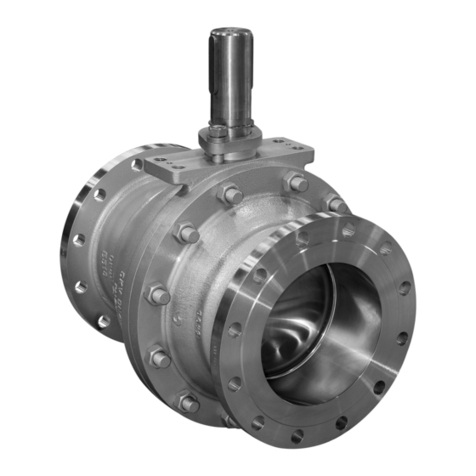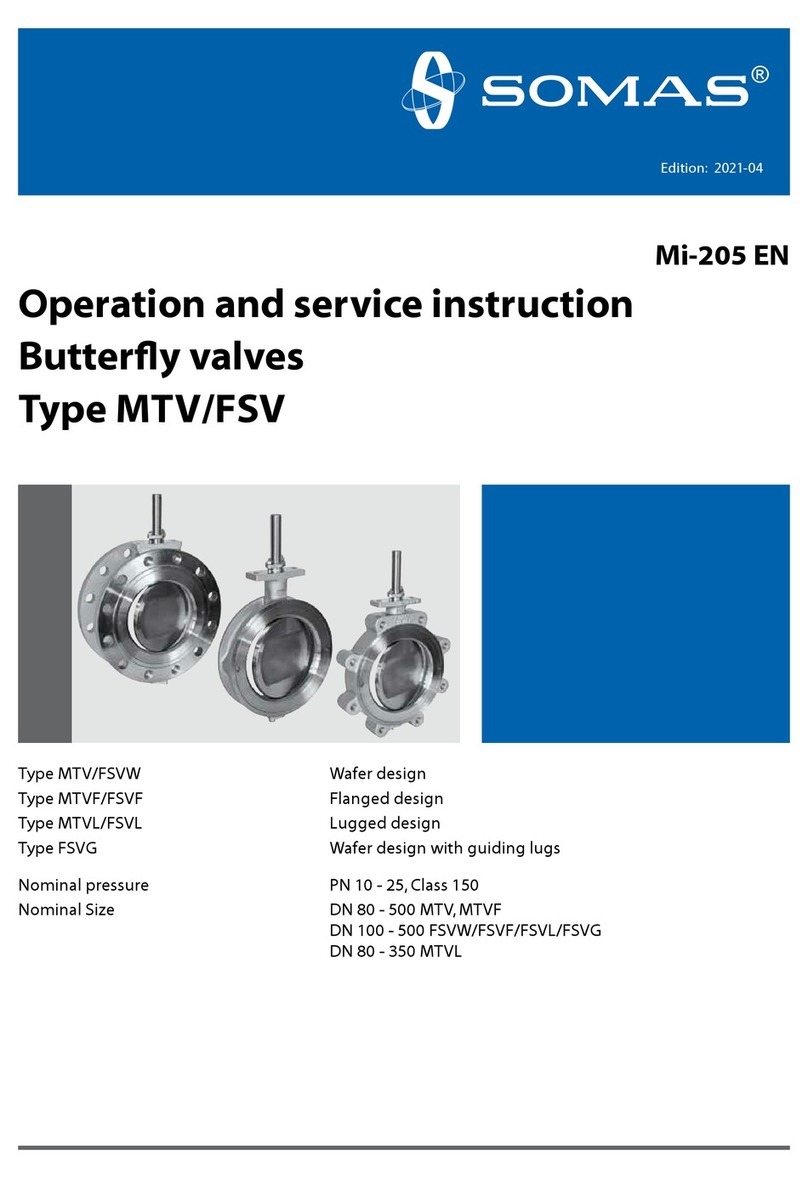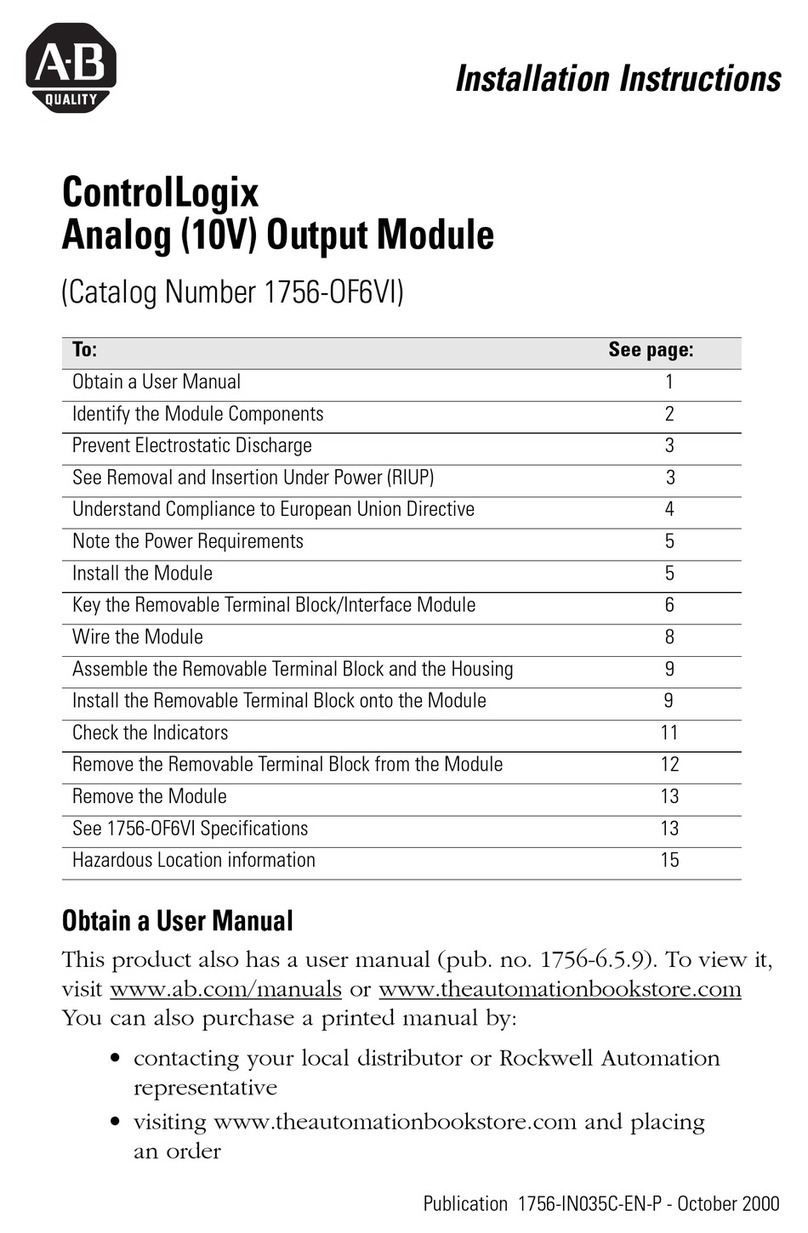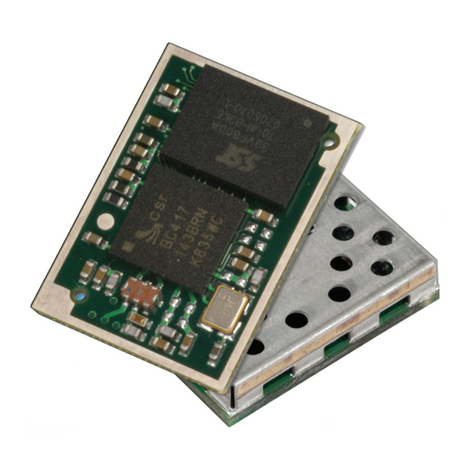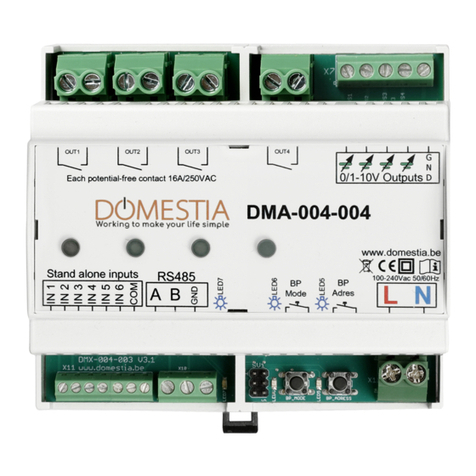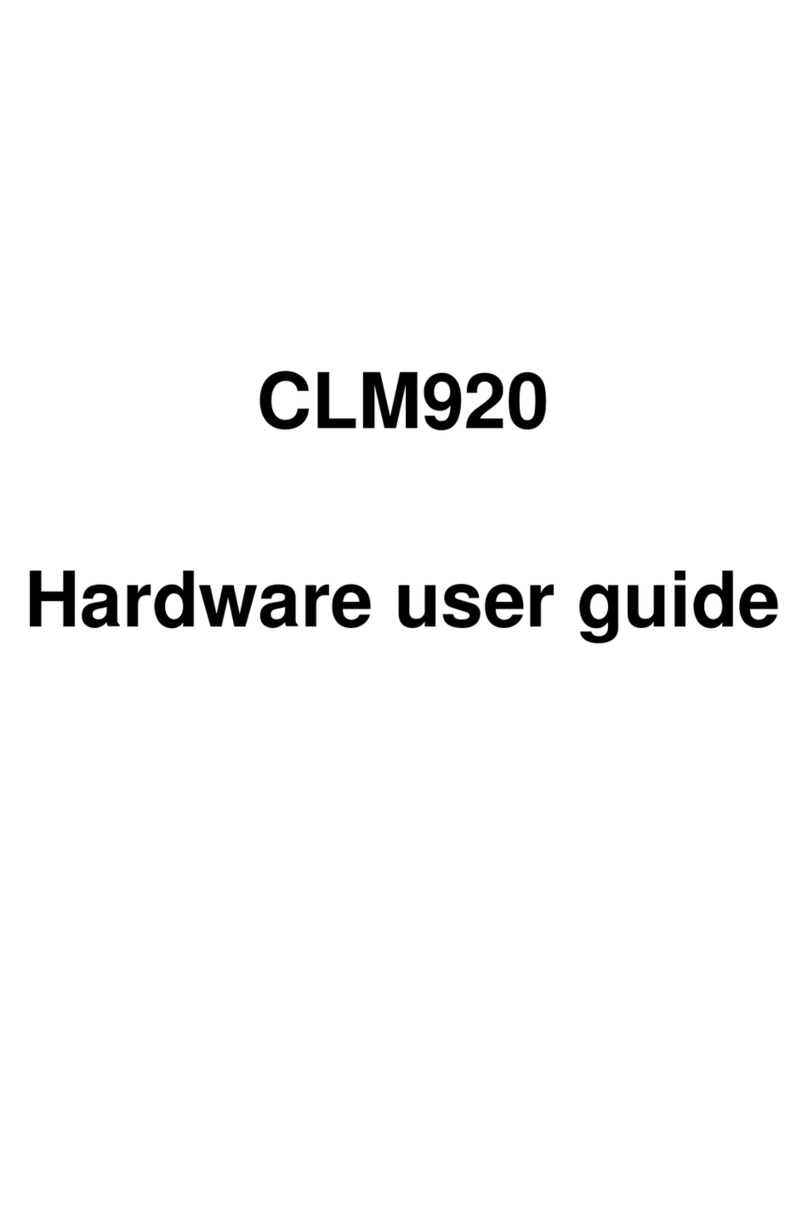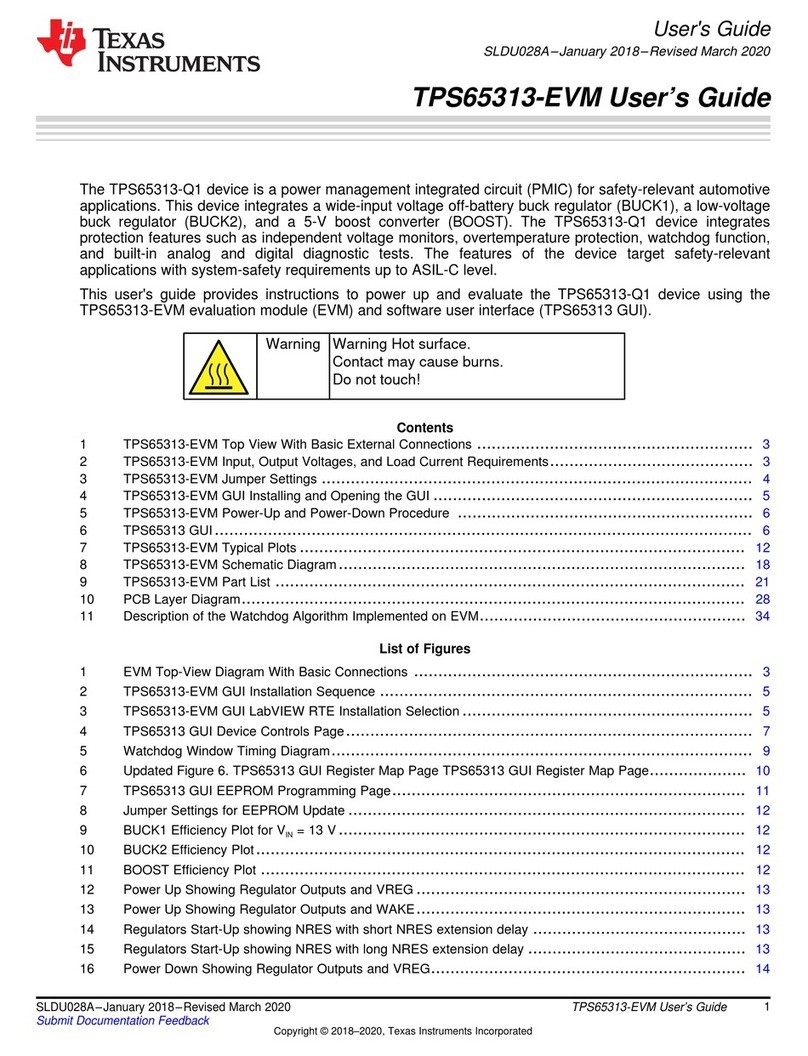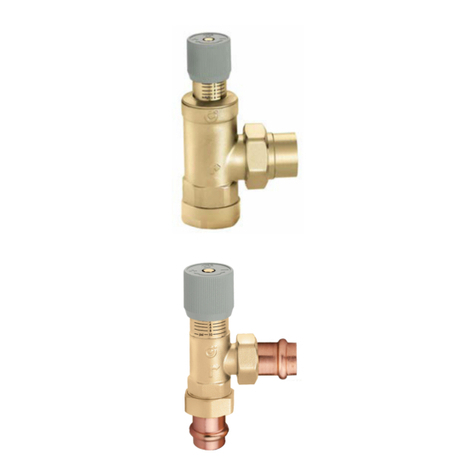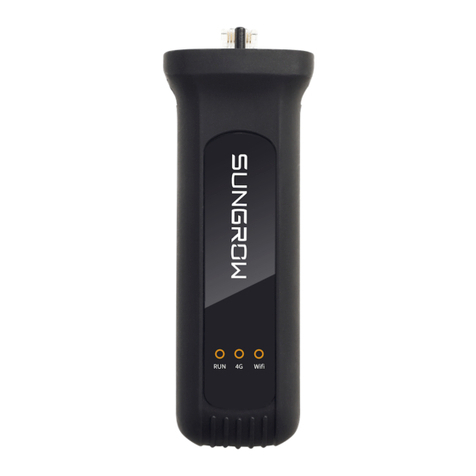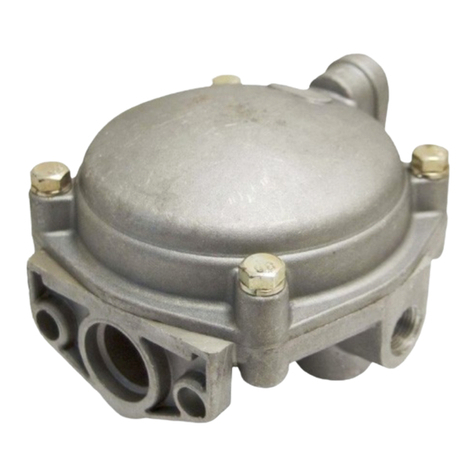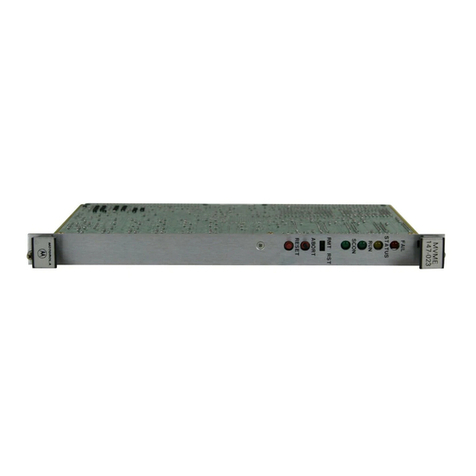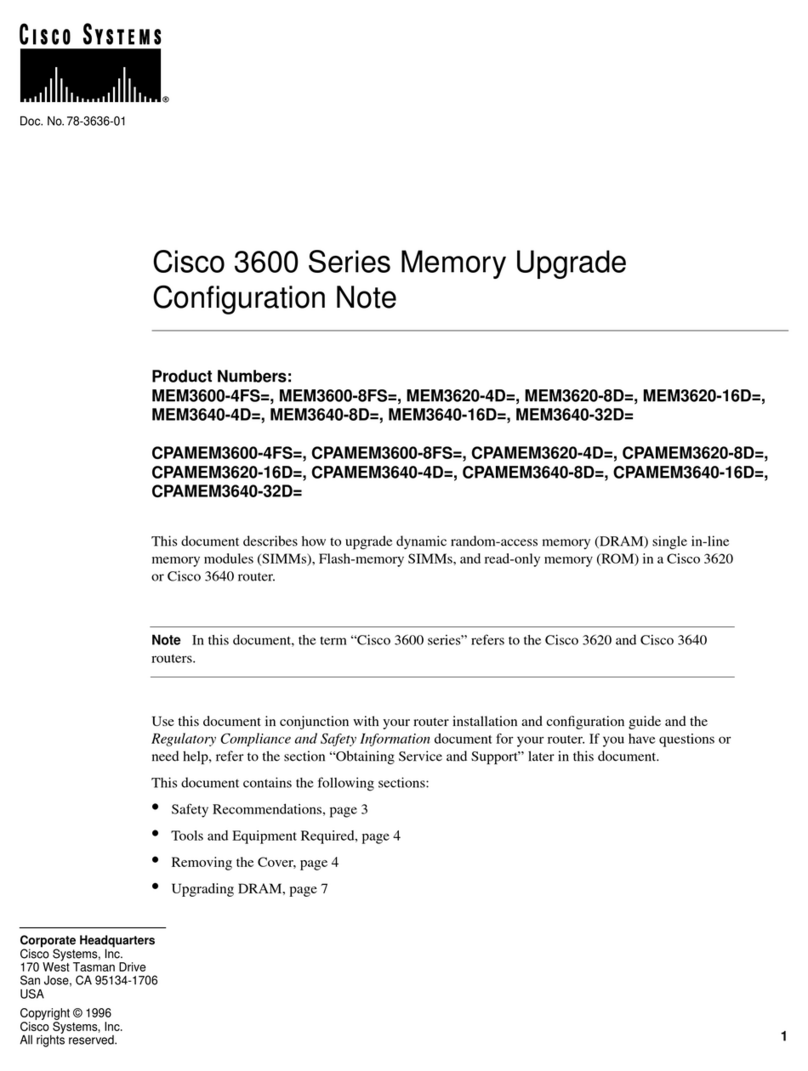SOMAS VSS Operating instructions

Mi-209 EN
Service and operating instruction
Buttery valves
Type VSS Lugged design
Nominal pressure PN 63, 100
ASME Class 600
Nominal size DN 80 - 600
Material Stainless steel
Edition: 2020-06

2
Edition: 2020-06 Original document - Mi-209 EN
Introduction
This operating manual is intended for the operating, maintenance and
supervisory personnel.
This operating manual also describes components, equipment and ancillary units
which are not or only partially included in the scope of supply.
The operating personnel must have read, understood and must comply with this
operating manual.
We keep the right to do any technical changes which are necessary to improve the
product without prior notice.
Copyright
Copyright by SOMAS Instrument AB. No part of this publication may be
reproduced, stored in a retrieval system, or transmitted in any form or by any
means, graphic, electronic, mechanical, photocopying, recording, taping, or
otherwise without the prior permission of the copyright owner.
Valve supplier
SOMAS Instrument AB
Norrlandsvägen 26-28
SE-661 40 SÄFFLE
SWEDEN
Phone: +46 (0)533 167 00
E-mail: sales@somas.se
Website: www.somas.se

3
Original document - Mi-209 EN Edition: 2020-06
Table of contents
1 Preliminary remarks 6
1.1 Explanation of warnings, symbols and signs 6
1.1.1 Warnings 6
1.1.2 Symbols and signs 7
2 Safety 8
2.1 Safety instructions 8
2.1.1 General dangers 8
2.1.2 Hazards due to electrical equipment 8
2.1.3 Additional hazards 8
2.1.4 State of the art 9
2.1.5 Preconditions for using the valve 9
2.2 Designated use of the valve 9
2.2.1 Use 9
2.2.2 Liability for non-designated use 10
2.3 Organizational measures 10
2.3.1 Availability of operating manual 10
2.3.2 Additional regulations 10
2.3.3 Checks 10
2.3.4 Protective equipment 10
2.3.5 Rebuilds or modifications at the valve 10
2.3.6 Replacing damaged parts 10
2.4 Selection and qualification of personnel 10
2.5 Safety instructions for butterfly valves 11
3 Description 14
3.1 General information 14
3.2 Function of the valve 14

4
Edition: 2020-06 Original document - Mi-209 EN
4 Technical specifications 15
4.1 Specifications 15
4.1.1 Gaskets 15
4.2 Tightening toeque for bolts 17
4.2.1 Fastening torque valve body PN 100 17
4.2.2 Tightening torque for screw in valves 18
4.2.3 Tightening of stuffing box 18
5 Assembly 19
5.1 Unpacking and transportation 19
5.2 Installation of the valve in the pipeline 20
5.2.1 Important information for installation 22
5.3 Start up 24
5.4 Disassembly of the pneumatic actuator 25
5.5 Positioning of the shaft with disassembled actuator 27
5.6 Assembly of the pneumatic actuator 28
5.6.1 Actuator mounting alternatives 30
6 Maintenance 31
6.1 Disassembly of the butterfly valve from pipeline 31
6.2 Maintenance 33
6.2.1 Procedure to evaluate a leakage on a butterfly valve installed
in a pipeline 34
6.3 Installation and disassembly of the stuffing box 34
6.4 Replacing the seat (standard metal seat) 37
6.4.1 Disassembly 38
6.4.2 Cleaning, lubrication and assembly 38

5
Original document - Mi-209 EN Edition: 2020-06
6.5 Mounting of a new fixed seat 39
6.6 Adjustment of the end positions 41
6.6.1 Setting of the “closed” position with type VSS 42
6.6.2 Setting of the “open” position with type VSS 43
6.7 Leak test of the valve 44
6.8 Components 46
6.8.1 VSS DN 80-600, with metal seat 46

6
Edition: 2020-06 Original document - Mi-209 EN
1 Preliminary remarks
To enable you to find information quickly and reliably in the operation manual,
this chapter familiarises you with the structure of the operating manual.
This manual uses symbols and special characters which make it easier for you to
find information. Please read the explanations of the symbols given in the section
below.
Ensure that you read all the safety instructions in this operating manual very
carefully.
You will find safety instructions in section 2, in the foreword to the sections and
before any working instructions.
1.1 Explanation of warnings, symbols and signs
1.1.1 Warnings
Warnings are used in this operating manual to warn against injury and material
damage. Always read and observe these warnings! Warnings are identified by the
following symbols:
In this manual are used diverse types of safety and warning notices:
Danger!
International
Safety symbol
Type of danger.
Advise for imminent danger. Not attention of the advices could be mortal or cause severe
injuries as a consequence.
Explanation of the countermeasures.
Warning!
International
Safety symbol
Type of danger.
Advise for imminent danger. Not attention of the advices could cause severe injuries or property
damage as a consequence.
Explanation of the countermeasures.
Attention!
International
Safety symbol
Type of danger.
Advise for possible danger. Not attention of the advices could cause property damage as a
consequence.
Explanation of the countermeasures.

7
Original document - Mi-209 EN Edition: 2020-06
Note
i
Advices and give tips for better understanding of the manual or a better handling of the valve.
1.1.2 Symbols and signs
Symbols and signs are used in this operating manual to provide fast access to
information.
1.1.2.1 Symbols and signs in the text
Symbol Denotation Explanation
Operating instructions This means there is an action to be carried out.
1.
2.
Operating instructions,
multi-step
Work instructions must be carried out in the
sequence shown.
Deviations from the sequence shown may result in
damages to the valve and accidents.
•
–
Lists, two-stage No activities are linked with lists.
➔Cross-reference References to images, tables, other sections or other
instructions.
Tab.1-1 Symbols in the text

8
Edition: 2020-06 Original document - Mi-209 EN
2 Safety
2.1 Safety instructions
2.1.1 General dangers
Sources of danger resulting in general hazards:
• Mechanical hazards
• Electrical hazards
2.1.2 Hazards due to electrical equipment
Due to the permanent dampness, electrically-operated machine parts represent a
potential source of danger.
Comply with all regulations on electrical equipment in damp areas!
2.1.3 Additional hazards
2.1.3.1 Entanglement, crushing and cut/sever hazards
• by moving machine parts left exposed, by removing covers for inspection,
sampling, etc.
• by automatic operated valves.
2.1.3.2 Burning or scalding hazards
• by opening or leaving open function-check and/or sampling openings on
systems operating at high temperatures (above 40°C).
• by operating temperature >= 70°C. Short contacts (approx. 1s) of the skin with
the surface of the valve may cause burns (pr EN 563).
• by operating temperature = 65°C. Longer contacts (approx. 3s) of the skin with
the surface of the valve may cause burns (pr EN 563).
• by operating temperature 55°C…65°C. Longer contacts (approx. 10 ... 3s) of the
skin with the surface of the valve may cause burns (pr EN 563).
2.1.3.3 Explosion hazards
A high surface temperature on a valve and actuator, constitutes (a risk for burn
injuries, and) a risk of ignition of explosive atmospheres in ATEX applications.
The surface temperature of the equipment is not dependent on the equipment
itself, but on the ambient conditions and the process conditions. The protection
from the surface temperature is the responsibility of the end user, and must be
effectuated before the equipment is put into service.

9
Original document - Mi-209 EN Edition: 2020-06
2.1.4 State of the art
This product has been built by SOMAS Instrument AB in accordance with state-
of-the-art standards and the recognized safety rules. Nevertheless, its use may
constitute a risk to life and limb of the user or of third parties, or cause damage to
the valve and to other material property, if:
• the product is not used as designated
• the product is operated or repaired by untrained personnel
• the product is modified or converted improperly and/or
• the safety instructions are not observed.
Therefore, every person involved in erecting, operating, inspecting, maintaining,
servicing and repairing the valve must read, understand and observe the complete
operating instructions, particularly the safety instructions.
2.1.5 Preconditions for using the valve
The valve only has to be used:
• in perfect technical condition
• as designated
• according to the instructions in the operating manual, and only by safety-
conscious persons who are fully aware of the risks involved in operating the
valve
• if all protective devices are installed and operative
Rectify immediately any functional disorders, especially those affecting the safety
of the valve!
2.2 Designated use of the valve
2.2.1 Use
The valves are appropriate to be used in pulp and paper industry, chemical
industry, shipbuilding industry, energy industry and offshore industry.
Particular data to the operation and limit values are specified on the data sheet
“Si-203EN”.
The operating values, limit values and setting data must not deviate from the
values specified in the operating manual and correspondig information sheet
without consulting the manufacturer! The manufacturer cannot be held liable for
any damages resulting from non-observance of the operating manual.
The user is responsible for knowing the impact from the media on the valve,
the resulting wear rate, and establishing maintenance interval, to maintain safe
operation.

10
Edition: 2020-06 Original document - Mi-209 EN
2.2.2 Liability for non-designated use
Using the valve for other purposes than those mentioned previously is considered
contrary to its designated use. For resulting damages of this, SOMAS Instrument
AB is not liable! The user take the risk.
2.3 Organizational measures
2.3.1 Availability of operating manual
The operating manual has to be stored and be readily available!
2.3.2 Additional regulations
In addition to the operating manual, it have to be observed all other generally
applicable legal and other mandatory regulations relevant to accident prevention
and environmental protection! Direct the personnel to comply with them!
2.3.3 Checks
Periodically check that the personnel carry out the work in compliance with the
operating manual and that they pay attention to risks and safety factors.
2.3.4 Protective equipment
Use when necessary protective equipment.
2.3.5 Rebuilds or modifications at the valve
Do not make any rebuilds or modifications at the valve yourself, which can affect
the security of the valve.
2.3.6 Replacing damaged parts
Valve parts that are not in perfect condition must be replaced immediately
with original spare parts! Use only original spare and wear parts from SOMAS
Instrument AB.
On unauthorized parts is not guarantee that they have been designed and
manufactured according to the application.
2.4 Selection and qualification of personnel
Operation, maintenance and repairing works require special knowledge and
may only be carried out by trained technical specialists or qualified personnel
authorized by the user.

11
Original document - Mi-209 EN Edition: 2020-06
2.5 Safety instructions for butterfly valves
• Operation of the butterfly valve is always subject to the local safety and
accident prevention regulations.
Danger!
Risk of injury!
Observe movements of the disc.
Keep hands, tools and other objects away from the area where the disc moves when the
actuator is connected to compressed air system. Single action actuators may move to “open” or
“closed” position without being connected to the air system.
Warning!
Before carrying out maintenance or repair work on the butterfly valve with actuator or
installation and removal of the butterfly valve from the pipeline, always disconnect the
compressed air supply to the actuator.
Single action actuators may move to “open” or “closed” position without being connected to the
air system.
Warning!
Ensure that personnel who work with, install or repair the butterfly valve are appropriately
trained. This prevents unnecessary damage and accidents or injury to personnel.
The maintenace and assembly personnel must be familiar with the process of installing and
disassembling the butterfly valve in a process line, the special and possible risks of the process
and the most important safety regulations.
The repair and assembly personnel must be familiar with the risks when handling pressurised
equipment, hot and cold surfaces, dangerous substances and substances which represent a
hazard to health.
Warning!
Do not exceed the design data of the butterfly valve!
Exceeding the design data marked on the butterfly valve may lead to damage and uncontrolled
escape of the pressurised medium.
Both the damage as such and the pressurised medium may lead to injuries to personnel.
Warning!
Do not remove the butterfly valve from the line as long as it is pressurised!
Dismantling or disassembly of a pressurised butterfly valve leads to an uncontrolled loss of
pressure. Always isolate the relevant butterfly valve in the pipe system; despressurise the
butterfly valve and remove the medium before working on the butterfly valve.

12
Edition: 2020-06 Original document - Mi-209 EN
Warning!
Before assembling or disassembling the pneumatic actuator of a butterfly valve installed in the
pipeline depressurise the relevant valve in the pipeline system, isolate the valve and remove the
medium before working on the valve.
The pressurised medium may lead to injuries to personnel.
Warning!
Inform yourself of the properties of the medium. Protect yourself and your environment from
hazardous or poisonous substances.
Observe the safety instructions in the safety data sheets of the manufacturers. Ensure that no
medium can enter the pipeline during maintenance work.
Warning!
Before replacing the stuffing box of a butterfly valve installed in the pipeline depressurise the
relevant valve in the pipeline system, isolate the valve and remove the medium before working
on the valve.
The pressurised medium may lead to injuries to personnel.
Danger!
Risk of injury!
Observe movements of the valve disc.
Keep hands, tools and other objects away from the area where the valve disc moves. The valve
with valve disc mounted may work as a cutting tool. Do not leave any foreign objects in the
valve body. The valve disc of the butterfly valve always works as a separate device. There is no
difference whether an actuator is installed or not. The position of the disc may change during
transport or handling of the butterfly valve.
Warning!
Protect yourself against noise - use the relevant safety equipment.
The butterfly valve may cause noise in the pipeline. The noise level depends on the type of
application and can be determined with the SOMAS software SomSize.
Additional noise sources in the vicinity of the butterfly valve may increase the noise level.
Warning!
Beware of very cold or hot surfaces!
The body of the butterfly valve may become very cold or very hot during operation. Protect
yourself against frostbite and burns.

13
Original document - Mi-209 EN Edition: 2020-06
Warning!
When transporting and handling the butterfly valve, observe its weight.
Never lift the valve by its positioner, limit switch, solenoid valve or piping. Place the hoisting
ropes securely according to lift instruction.
The butterfly valve or parts thereof may injure persons if dropped.
Do not walk under suspended loads.

14
Edition: 2020-06 Original document - Mi-209 EN
3 Description
3.1 General information
The SOMAS butterfly valve type VSS is used for control shut-off and hand
operation. The valve is suitable for liquids, vapours and gases in a wide
temperature range.
Due to the sophisticated triple-eccentric design and the special shape of the
disc a solid stainless steel seat can be used. This combination gives a solution
resistant against high flow velocity and guarantees no leakage even under severe
conditions.
The seat is available in different stainless qualities and is replaceable.
The butterfly valve type VSS is designed as a wafer style valve. As alternative there
is a lug type version available.
The butterfly valve is checked and ready for use at delivery and can be equipped
with actuators, valve positioners as well as with other accessories.
3.2 Function of the valve
Fig.3-1 Function of the valve
The standard SOMAS VSS butterfly valve is equipped with a metal seat. Other
available seat materials are PTFE, HiCo and HiNi.

15
Original document - Mi-209 EN Edition: 2020-06
Note
i
Use gaskets with the nominal size of the valve, to have a leak-proof sealing in both flow
directions.
The valve is adjustable. This means, the more the valve is closed the tighter it
becomes (➔Fig.3-1).
Through the sophisticated triple eccentric design, the seat is relased from the disc
when opening the valve. This reduce wearing and extend the durability of the
valve.
To close the butterfly valves for liquids need less torque than valves for vapors
and gases.
The butterfly valve is tight in both flow directions. The preferred flow direction
is the direction towards the flat side of the disc. This direction is marked with
arrows on both sides of the valve.
When the valve is used in applications with emergency quick close functions, the
valve is recommended to be installed in a way so that the flow hits the shaft side
of the valve disc first. With this installation the differential pressure will help
the actuator to close the valve. With this mounting position the capacity will be a
little reduced due to more turbulence on the shaft side.
4 Technical specifications
4.1 Specifications
4.1.1 Flange gaskets
Flat gaskets are required to ensure the right pressure on the valve cover plate.
Metal reinforced graphite gaskets with a maximum thickness of 1.5 mm, or
cam profile gaskets in stainless steel and graphite, are recommended.
Spiral wound gaskets shall not be used.
Gasket dimensions shall be according to table 4-1 and table 4-2.
Please note that the gasket inside diameter is vital and shall not be exceeded.
Note
i
To ensure pressure on the cover plate use only gaskets with right inside diameter.

16
DN PN 63 PN 100
80 86 148 90 154
100 110 174 115 180
125 135 210 141 217
150 163 247 169 257
200 210 309 220 324
250 264 364 274 391
300 314 424 325 458
350 360 486 368 512
400 415 543 420 -
NPS
389 149
4114 194
5141 241
6168 267
8219 321
10 273 400
12 324 457
14 356 492
16 406 565
18 457 615
20 510 685
22 559 733
24 610 790
Edition: 2020-06 Original document - Mi-209 EN
Gasket dimensions according to EN 1514-1 Gasket dimensions according to DIN 2697
For installation between pipe flanges acc. to PN 63-100, the inside diameter acc. to
EN 1514-1 of the gasket should not be exceeded, see (➔Tab.4-1).
For dimensions not included in the table contact SOMAS
To fit between pipe flanges acc. to Class 600, the dimensions acc. to
ASME B16.21 RF are valid, whereas the following dimensions for gaskets are valid
(➔Tab.4-2).
For dimensions not included in the table contact SOMAS
Tab.4-2
Class 600
Max. inside diam. (mm) Outside diameter (mm)
Tab.4-1
Max.inside diam.(mm) Outside diameter (mm) Max.inside diam.(mm) Outside diameter (mm)
Gasket dim. according to ASME B16.21

17
Original document - Mi-209 EN Edition: 2020-06
Tab.4-3 For dimensions not included in the table contact Somas
4.2 Tightening torque for bolts
4.2.1 Fastening torque valve body PN 100
DN PN/Class Bolts Torque
Nm)1
Dim. Quantity Min.
DN 80 PN100
/600
3/4”
M24
8
8
145
200
DN 100 PN100
/600
7/8“
M27
8
8
250
260
DN 150 PN 100
/ 600
1“
M30
12
12
290
285
DN 200 PN 100
/600
1 1/8”
M33
12
12
445
555
DN 250 PN 100
/600
1 1/4”
M36
16
12
450
795
DN 300 PN 100
/600
1 1/4”
M39
20
16
475
1140
DN 350 PN 100
/600
1 3/8”
M45
20
16
570
1870
DN 400 PN 100
/600
1 1/2”
M45
20
16
795
2510
DN 500 PN 100 M52 20 2310
DN 600 PN 100 M56 20 3460
1The information in the table refers to lubricated bolts. The correction factor for new, unlubricated bolts is 1.5.
Tighten the bolts alternately until the correct tightening torque is reached.
Tightening torque applies to flat gaskets corresponding to non-reinforced and reinforced graphite according to
EN 12516-2: 2014 with m-factor according to ASME 2.0 to 2.5. Maximum thickness for gasket: 2.0 mm. Tightening
torque must not be exceeded, because then the functionality of the valve can be compromised. Tightening tor-
ques in Nm are designed for gaskets according to EN 1514-1, ASME B16.21 and counter flanges according to
EN 1092-1, EN 1759-1, ASME B16.47.

18
M6 M8 M10 M12 M16 M20 M24 M27
10 Nm 25 Nm 47 Nm 57 Nm 140 Nm 273 Nm 472 Nm 682 Nm
DN
80 20/35 M10 15
100 25/40 M10 15
125
150 30/45 M12 20
200 35/50 M12 25
250 40/55 M16 35
300 50/65 M16 40
350 60/75 M20 70
400 70/90 M20 100
450
500 80/100 M24 130
600 90/110 M24 150
Edition: 2020-06 Original document - Mi-209 EN
4.2.2 Tightening torque for screws in valves
4.2.3 Tightening of stuffing box
The prescribed torque is valid for lubricated stud bolts and new or repacked
stuffing boxes. A worn stuffing box and unlubricated stud bolts may require
a higher torque.
In case of leakage tighten the stud bolts until leakage stops. This have to
be done regularly.
If leakage does not stop, replace the stuffing box with a new one.
To have a leak tight stuffing box, it is vital to have the compression force of
the gland distributed evenly on the gland screws, and to have the gland
aligned to the stuffing box.
Table 4-5 is valid for valves with a maximum differential pressure of 50 bar.
Tab.4-5
For data not included in the tables contact SOMAS
Screw dim./class.
Tightening torque MV 1)
1) Mv-recommendations refer to flat burr-free surfaces lubricated with a good quality lubricant.
Tab.4-4
Stuff. box diameters
di/dy (mm)
Stud bolt
dim.
Minimum torque
(Nm)

19
Original document - Mi-209 EN Edition: 2020-06
5 Assembly
5.1 Unpacking and transportation
Inspect the butterfly valve for transport damage when unpacking. The protective
caps must only be removed immediately before assembly. The valve must be
stored on a suitable base and protected against dirt until installed.
The valve must be stored in a cool, dry, clean place, not in direct contact with
the floor. The valve must always be protected against dirt during storage and
assembly.
Warning!
When transporting and handling the valve, observe the weight of the valve or of the whole unit.
Do not walk under suspended loads.
Transportation must be carried out with suitable hoisting equipment as shown in
(➔ Fig.5-1). The picture shows a standard situation. Please note that all possible
situations that can occur cannot be covered in this lift instruction.
Fig.5-1 Lifting

20
Edition: 2020-06 Original document - Mi-209 EN
5.2 Installation of the valve in the pipeline
Attention!
The installation of the butterfly valve is usually made with full installed actuator. The assembly
is made by closing spring loaded and double acting actuators with closed butterfly valve, by
opening spring loaded actuators with open butterfly valve.
At opening spring loaded actuators, a short adapter with additional flanges is to be installed in
the pipeline immediately in front of and behind the valve.
Mounting in horizontal pipes
How SOMAS valves are mounted in a horizontal pipe can depend on a variety of
factors like the media, the application as such and available space.
SOMAS valves (ball valves, segmented valves and butterfly valves) should
generally be mounted:
• In the first place with the shaft horizontally
• If it is necessary to deviate from above, the spindle should point upwards in
the upper half plane
• For media that has a thick ”bottom fraction” that can accumulate in the lower
shaft bearing, avoid mounting with the shaft straight up or near straight up
• Mounting with the shaft pointing down in the lower half plane should be
avoided, and especially mounting with the shaft straight down
• If there are strong reasons for choosing the mountings that contradict the
instructions above, SOMAS should be contacted to evaluate the risks
associated with these mountings
The direction of flow is indicated with arrows on the valve body. Fix the pipeline
correctly to prevent the exertion of external forces on the valve.
Note
i
The prefered flow direction is shown with arrows on the valve body (➔Fig.5-2). The medium
should impact on the flat side of the disc.
End of line-installation of the valve is only permitted after approval from SOMAS.When the valve
is used in applications with emergency quick close functions, the valve is recommended to be
installed in a way so that the flow hits the shaft side of the valve disc first. With this installation
the differential pressure will help the actuator to close the valve. With this mounting position the
capacity will be a little reduced due to more turbulence on the shaft side.
Table of contents
Other SOMAS Control Unit manuals
Popular Control Unit manuals by other brands
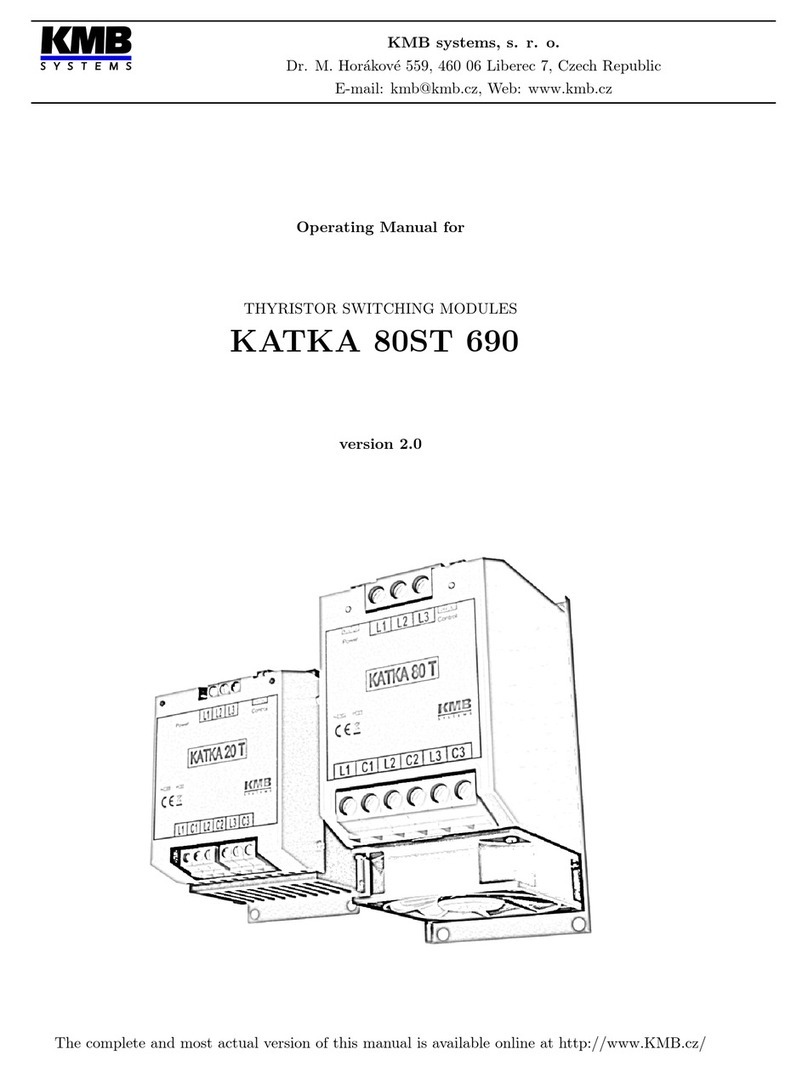
KMB
KMB KATKA 80ST 690 operating manual
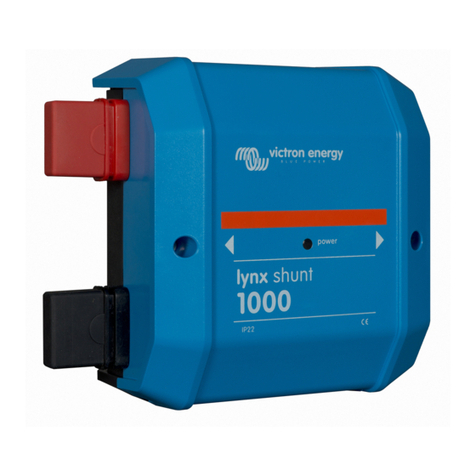
Victron energy
Victron energy Lynx Shunt VE.Can manual
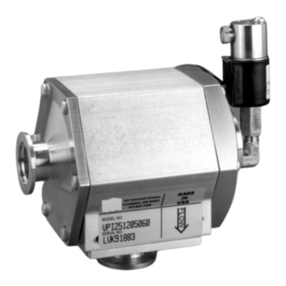
Agilent Technologies
Agilent Technologies VPI Series instruction manual
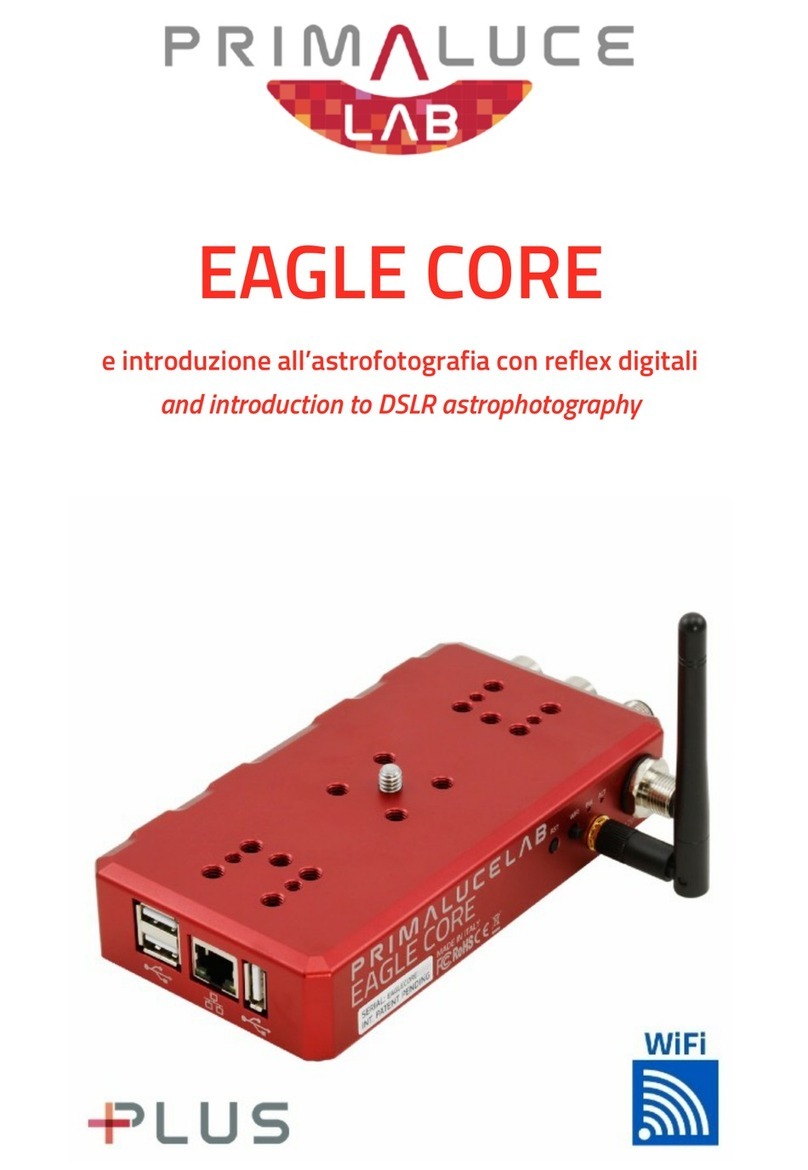
PrimaLuceLab
PrimaLuceLab EAGLE CORE manual
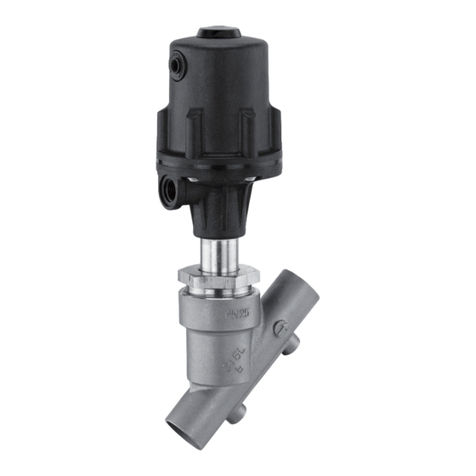
GEM
GEM 554 Installation, operating, & maintenance instructions
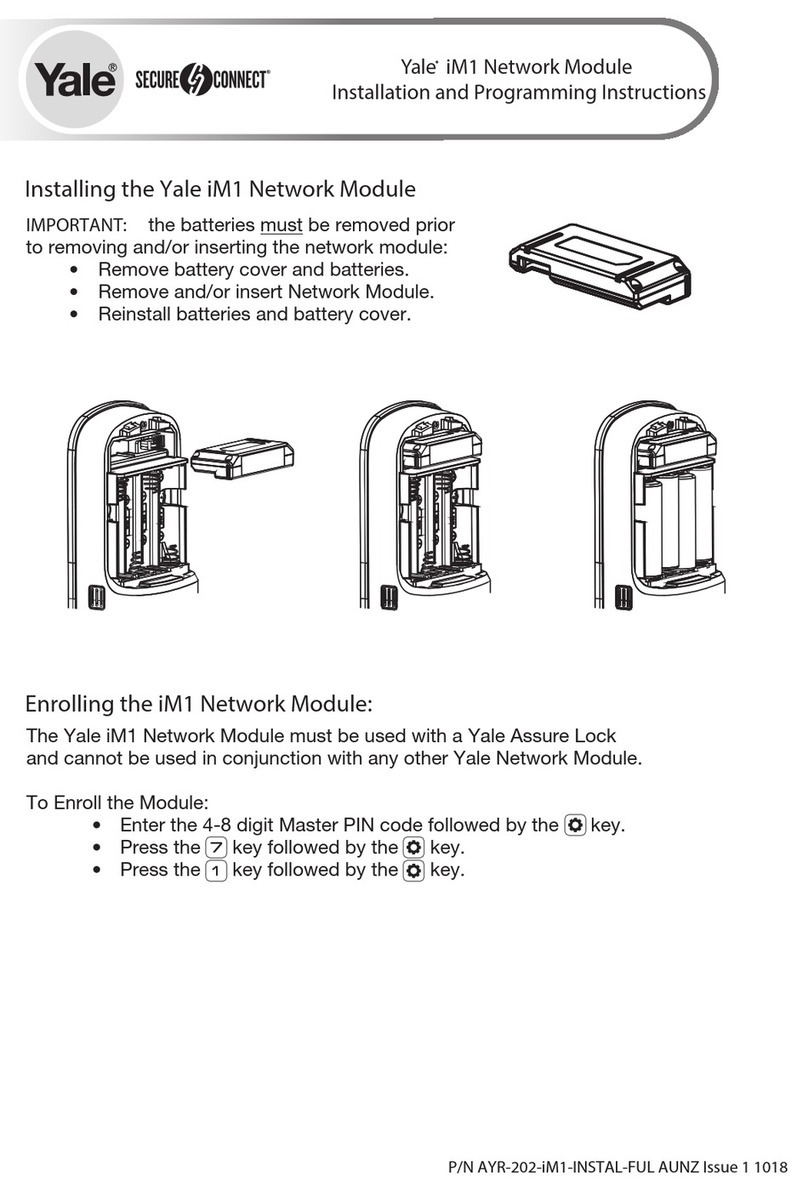
Yale
Yale SECURE CONNECT iM1 Installation and programming instructions
